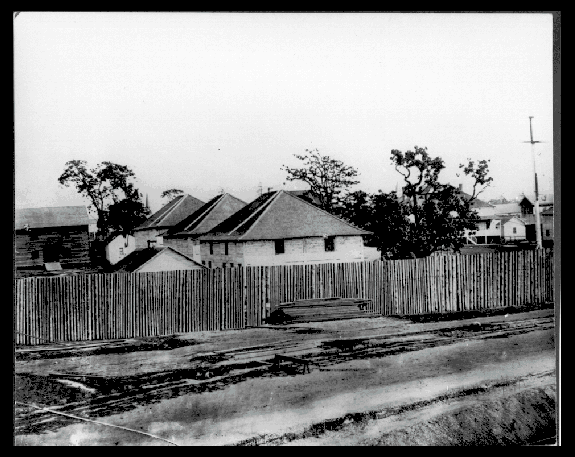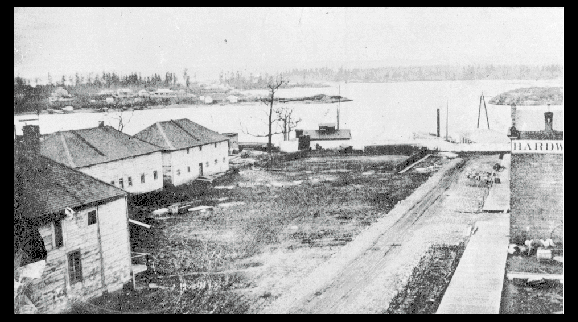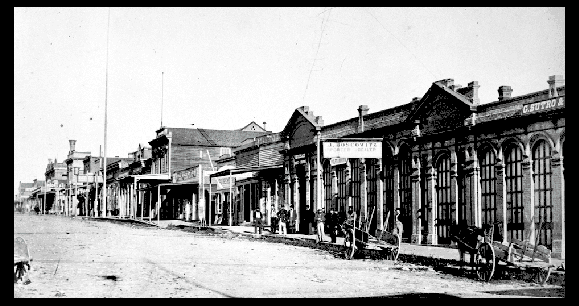Historical Background of Victoria
General Progress on Wharf Street
List of Wharf Street Businesses
Historical Background
Long prior to the establishment of the city of Victoria, the lands on which the city is currently located were occupied and home to the Lekwammen First Nations people. In 1843, in hopes of protecting British interests and slowing the increased encroachment of American settlement northward, the Hudson’s Bay Company established the Fort Victoria fur trading post. The Colony of Vancouver Island was established in 1849, and Victoria became the capital of the first British colony on the Western reaches of North America.
The British government leased Vancouver Island to the Hudson's Bay Company for a minimal fee on the condition that the company would establish settlement in the colony within five years. Consequently, during these early years Victoria slowly grew up and developed around Fort Victoria and the fur trading company maintained a strong influence over the town. Ten years after the establishment of Fort Victoria, surveyors J.D. Pemberton and B.W. Pearse set out the Victoria town site. Small wooden shops and saloons slowly grew up around the fort. By 1858, the European population in Victoria was around 500 and the permanent winter population of the Lekwammen was approximately 700.3
With the discovery of gold on the mainland in 1858, the Colony of British Columbia was established to safeguard British interests. This year marked the end to the slow pace and development that had previously characterized Victoria. Hotels, saloons, chemists, and trading buildings sprang up at unprecedented rates. Around the same time, the Hudson's Bay Company lease on Vancouver Island expired, and James Douglas resigned from his position as chief factor of the company to assume the position as governor of both colonies. As a result of the gold rush, the city of Victoria changed immensely and witnessed a notable proliferation of development. Ten to twenty thousand people flooded into the city in 1858 on their way to the mainland. The same year the number of permanent residents in the town increased from a few hundred to 6000.4
The town experienced difficulties in accommodating this huge influx of people and struggled to provide them with sufficient accommodation, food, and administration. In attempts to meet the demand, 225 buildings were constructed in six weeks during the summer of 1858.5 While the gold was located on the mainland, Victoria greatly benefitted from the gold rush as the city remained the main supply locale for prospectors on route to make it rich. The gold rush served to infuse Victoria’s economy with capital, which resulted in the construction of new buildings, improved communications, a rise in land values, and an increase in investment. To further improve and ensure the economic viability of the city, Victoria was declared a free port in 1860. The quick growth of the commercial district along Wharf Street was a clear indication of the success of free trade. The buildings constructed during this period are the oldest masonry buildings in Victoria, and possibly in Western Canada.6
Victoria was incorporated as a city in
1862 and in 1864 the final remnants of Fort Victoria were dismantled.
The land was subdivided and sold by the company at auction.7
In 1866, the colonies of Vancouver Island and British Columbia merged.
Five years later in 1871, British Columbia joined confederation and Victoria
became the political and economic capital of the country's westernmost
province. In years following the gold rush, Victoria continued to expand
and remained the largest settlement on the west coast north of San Francisco.
Many of the gold miners who did not succeed in gold rush
capitalized on the potential of commercial business in Victoria
and established themselves as merchants and business owners. Since the
construction of Fort Victoria in 1843 through to the 1880s Victoria changed
rapidly from a fur trade outpost into a city.
View of Fort Victoria from Wharf Street - 1860s
View of Fort Victoria Buildings From the Occidental Hotel - 1864
Lower Yates Street, Near the Corner of Wharf Street - 1868


